Thyroid Function Tests
Thyroid function tests

Standard Tests
TSH levels
Free T4 (fT4) levels
Measurements of total T4 + T3 used to be common however detects both bound and free T3 + T4
Elevated total T4 may occur in healthy individuals if there is an increase in binding protein concentrations
Reliable tests now exist for free T4 + T3
T3 = 3.9-6.7 pmol/L
T4 = 12-22 pmol/L
Thyroid-stimulating hormone
Produced by the pituitary gland, not the thyroid, however:
TSH levels are controlled by negative feedback – can be indication of thyroid function (changes in T3+T4 will result in changes in TSH to try compesate)
TSH levels greatly elevated in hypothyroidism – >10 fold increase over reference values
More sensitive marker than decreased fT4 - increased TSH occurs before fT4 decreases
TSH levels greatly supressed in hyperthyroidism
Low concentrations can also occur in non-thyroidal illness
TSH measurement is the first-line test of thyroid function.
Free T4 + T3 Measurements
Desirable as free hormone is clinically relevant
Total levels can change under conditions that alter thyroxine-binding globulin (TBG) levels e.g. pregnancy
Large changes in TBG may still affect fT4 + fT3 levels
fT3 levels often normal in hypothyroidism
fT3 levels usually raised more than fT4 levels in hyperthyroidism
Unless complicated by an illness effecting conversion of T4 to T3
Therefore: – fT4 levels are a better indication of hypothyroidism
fT3 levels are a better indication of hyperthyroidism

More Posts from Contradictiontonature and Others

Today is World Blood Donor Day – here’s a look at some blood chemistry! More info/high-res image: http://wp.me/s4aPLT-blood

Got a chemistry-themed watch for Christmas - good for checking the time periodically 😃

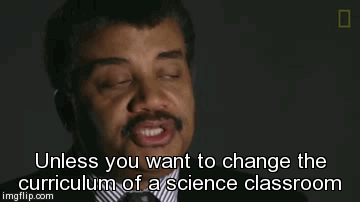

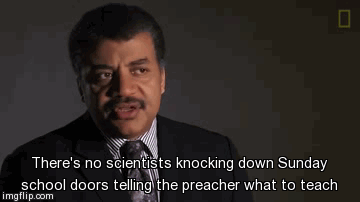
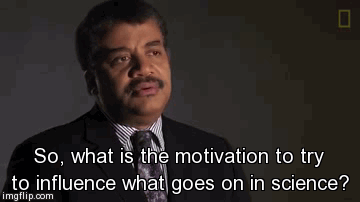
Neil deGrasse Tyson talking about creationism, science celebrities and kids on National Geographic. Watch the full video here.

Scientists show how drug binds with ‘hidden pocket’ on flu virus
A new study led by scientists at The Scripps Research Institute (TSRI) is the first to show exactly how the drug Arbidol stops influenza infections. The research reveals that Arbidol stops the virus from entering host cells by binding within a recessed pocket on the virus.
The researchers believe this new structural insight could guide the development of future broad-spectrum therapeutics that would be even more potent against influenza virus.
“This is a very interesting molecule, and now we know where it binds and precisely how it works,” said study senior author Ian Wilson, Hanson Professor of Structural Biology, chair of the Department of Integrative Structural and Computational Biology and member of the Skaggs Institute for Chemical Biology at TSRI.
The study was published in the journal Proceedings of the National Academy of Sciences.
Rameshwar U. Kadam, Ian A. Wilson. Structural basis of influenza virus fusion inhibition by the antiviral drug Arbidol. Proceedings of the National Academy of Sciences, 2016; 201617020 DOI: 10.1073/pnas.1617020114
This is a 3-dimensional illustration showing the different features of an influenza virus, including the surface proteins hemagglutinin (HA) and neuraminidase (NA)/CDC

Heart Regeneration
If a person suffers a heart attack and survives, chances are their heart muscle will never be quite the same. Indeed, the associated scarring often results in permanent damage that can lead to heart failure and eventual death. Scientists are therefore searching for possible ways to promote regeneration of damaged hearts, and it’s possible that newborn mice may hold the answer. For a few weeks after birth, these animals can almost entirely regenerate their heart tissue after an injury. And new research suggests a key process that may be critical for this regenerative ability: regrowth of nerves. Blocking nerve growth specifically in experimental animals completely prevented the regrowth of damaged heart tissue. In control animals, the nerves regrew into their normal branching patterns—like those pictured. Thus if researchers are to have any hope of regenerating adult hearts after injury, their best bet might be to boost accompanying nerve growth.
Written by Ruth Williams
Image from work by Ian A. White and colleagues
Interdisciplinary Stem Cell Institute, University of Miami Miller School of Medicine, USA
Image copyright held by the American Heart Association
Published in Circulation Research, December 2015
You can also follow BPoD on Twitter and Facebook

(Image caption: An fMRI scan shows regions of the brain that become active when devoutly religious study participants have a spiritual experience, including a reward center in the brain, the nucleus accumbens. Credit: Jeffrey Anderson)
This is your brain on God
Religious and spiritual experiences activate the brain reward circuits in much the same way as love, sex, gambling, drugs and music, report researchers at the University of Utah School of Medicine. The findings were published in the journal Social Neuroscience.
“We’re just beginning to understand how the brain participates in experiences that believers interpret as spiritual, divine or transcendent,” says senior author and neuroradiologist Jeff Anderson. “In the last few years, brain imaging technologies have matured in ways that are letting us approach questions that have been around for millennia.”
Specifically, the investigators set out to determine which brain networks are involved in representing spiritual feelings in one group, devout Mormons, by creating an environment that triggered participants to “feel the Spirit.” Identifying this feeling of peace and closeness with God in oneself and others is a critically important part of Mormons’ lives — they make decisions based on these feelings; treat them as confirmation of doctrinal principles; and view them as a primary means of communication with the divine.
During fMRI scans, 19 young-adult church members — including seven females and 12 males — performed four tasks in response to content meant to evoke spiritual feelings. The hour-long exam included six minutes of rest; six minutes of audiovisual control (a video detailing their church’s membership statistics); eight minutes of quotations by Mormon and world religious leaders; eight minutes of reading familiar passages from the Book of Mormon; 12 minutes of audiovisual stimuli (church-produced video of family and Biblical scenes, and other religiously evocative content); and another eight minutes of quotations.
During the initial quotations portion of the exam, participants — each a former full-time missionary — were shown a series of quotes, each followed by the question “Are you feeling the spirit?” Participants responded with answers ranging from “not feeling” to “very strongly feeling.”
Researchers collected detailed assessments of the feelings of participants, who, almost universally, reported experiencing the kinds of feelings typical of an intense worship service. They described feelings of peace and physical sensations of warmth. Many were in tears by the end of the scan. In one experiment, participants pushed a button when they felt a peak spiritual feeling while watching church-produced stimuli.
“When our study participants were instructed to think about a savior, about being with their families for eternity, about their heavenly rewards, their brains and bodies physically responded,” says lead author Michael Ferguson, who carried out the study as a bioengineering graduate student at the University of Utah.
Based on fMRI scans, the researchers found that powerful spiritual feelings were reproducibly associated with activation in the nucleus accumbens, a critical brain region for processing reward. Peak activity occurred about 1-3 seconds before participants pushed the button and was replicated in each of the four tasks. As participants were experiencing peak feelings, their hearts beat faster and their breathing deepened.
In addition to the brain’s reward circuits, the researchers found that spiritual feelings were associated with the medial prefrontal cortex, which is a complex brain region that is activated by tasks involving valuation, judgment and moral reasoning. Spiritual feelings also activated brain regions associated with focused attention.
“Religious experience is perhaps the most influential part of how people make decisions that affect all of us, for good and for ill. Understanding what happens in the brain to contribute to those decisions is really important,” says Anderson, noting that we don’t yet know if believers of other religions would respond the same way. Work by others suggests that the brain responds quite differently to meditative and contemplative practices characteristic of some eastern religions, but so far little is known about the neuroscience of western spiritual practices.
The study is the first initiative of the Religious Brain Project, launched by a group of University of Utah researchers in 2014, which aims to understand how the brain operates in people with deep spiritual and religious beliefs.

This Week in Chemistry: Preventing marble statue weathering, further progress towards hydrogen fusion, and more! Links: http://goo.gl/WeJRV5

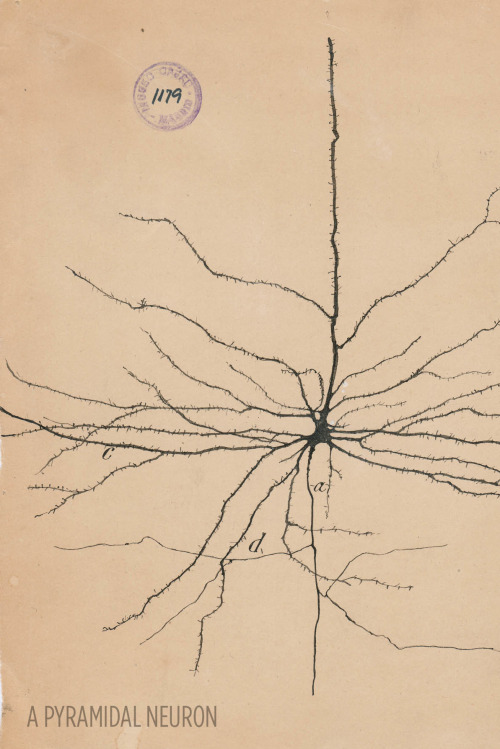

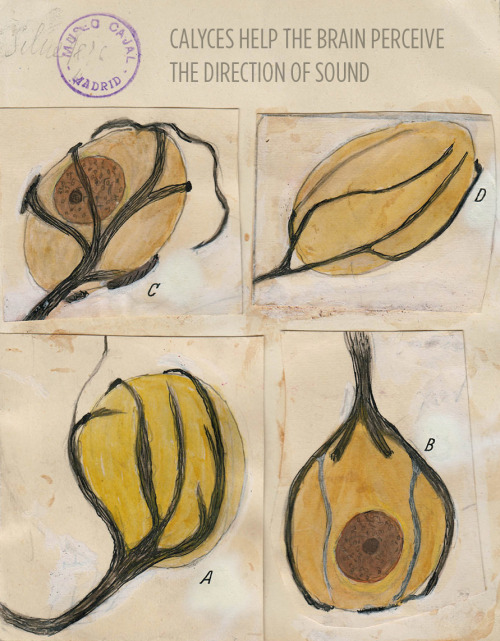
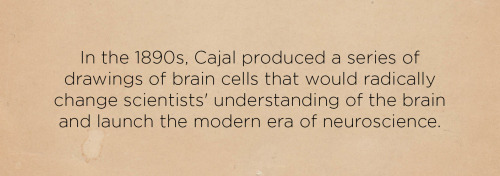
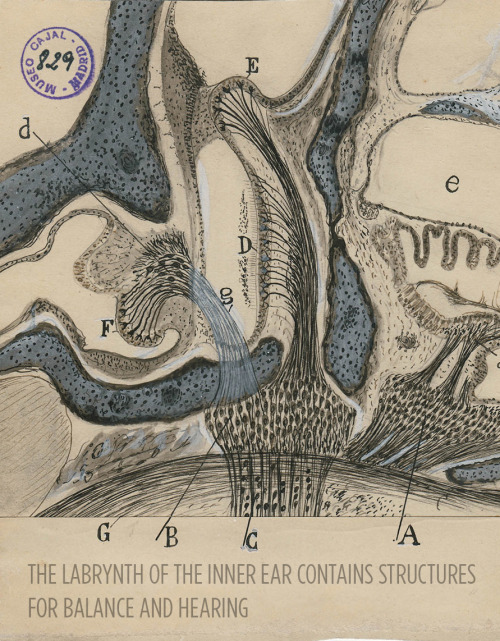

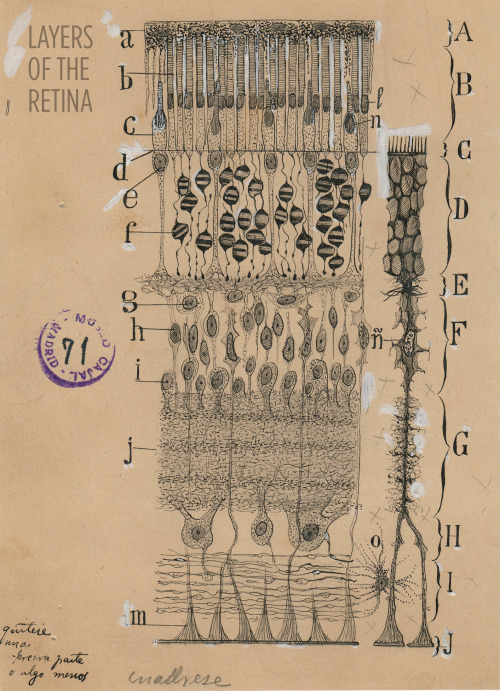
Art and science in beautiful conversation!
Here’s a 30-something Santiago Ramón y Cajal hanging out in his library:

For more, check out this article or visit the Weisman Art Museum in Minnesota before May 21.
Images courtesy of Instituto Cajal del Consjo Superior de Investigaciones Científicas, Madrid



Cosmos: A Spacetime Odyssey | Super/hypernova + Colors.

In the Alice in Wonderland world of the atomically small, things can be in two places at once, merely looking at a particle can alter a twin on the other side of the universe apparently instantaneously, and theoretical cats can be both alive and dead.
Certainty is also somehow replaced by chance, an idea that once moved a somewhat vexed Albert Einstein to famously say: “God doesn’t play dice with the universe.”
Such strange, almost magical effects have always been confined to the world of photons and atoms – until now.
In the journal Nature, scientists at the US National Institute of Standards and Technology (NIST) in Colorado reported the first “glimpses” of quantum effects, as they are known, happening on a scale just large enough to be seen by the human eye.
It is a breakthrough that could have significant implications for attempts to create quantum computers that are many millions of times faster than the current machines.
One of the researchers, Dr John Teufel, told the Independent: “I think we’re in an extremely exciting time where this technology we have available gives us access to things people have been talking about as thought experiments for decades.
“Just now what’s exciting is we can go into the laboratory and actually witness these quantum effects.”
Continue Reading.
-
 obnoxiousmedico liked this · 3 years ago
obnoxiousmedico liked this · 3 years ago -
 greyskyflowers liked this · 3 years ago
greyskyflowers liked this · 3 years ago -
 jenny-marteen7 liked this · 3 years ago
jenny-marteen7 liked this · 3 years ago -
 loseallcontrol liked this · 3 years ago
loseallcontrol liked this · 3 years ago -
 fragdmi reblogged this · 3 years ago
fragdmi reblogged this · 3 years ago -
 fragdmi liked this · 3 years ago
fragdmi liked this · 3 years ago -
 nrkhlshkrsn reblogged this · 4 years ago
nrkhlshkrsn reblogged this · 4 years ago -
 katgaby liked this · 4 years ago
katgaby liked this · 4 years ago -
 ixissss liked this · 4 years ago
ixissss liked this · 4 years ago -
 2fast2live-2young2die liked this · 4 years ago
2fast2live-2young2die liked this · 4 years ago -
 thatchickwiththecamera liked this · 4 years ago
thatchickwiththecamera liked this · 4 years ago -
 asthmaticseamonster reblogged this · 4 years ago
asthmaticseamonster reblogged this · 4 years ago -
 peterpans-shadow reblogged this · 4 years ago
peterpans-shadow reblogged this · 4 years ago -
 generousfreaklandperson liked this · 4 years ago
generousfreaklandperson liked this · 4 years ago -
 eventhebestdayhasastorm reblogged this · 4 years ago
eventhebestdayhasastorm reblogged this · 4 years ago -
 eventhebestdayhasastorm liked this · 4 years ago
eventhebestdayhasastorm liked this · 4 years ago -
 nance-drew liked this · 4 years ago
nance-drew liked this · 4 years ago -
 crustaceanenjoyer liked this · 4 years ago
crustaceanenjoyer liked this · 4 years ago -
 alium liked this · 4 years ago
alium liked this · 4 years ago -
 thelion-orsoiledcalico reblogged this · 4 years ago
thelion-orsoiledcalico reblogged this · 4 years ago -
 werenotacoupleyesyouare liked this · 4 years ago
werenotacoupleyesyouare liked this · 4 years ago -
 andromeda224 reblogged this · 4 years ago
andromeda224 reblogged this · 4 years ago -
 liamrrys liked this · 4 years ago
liamrrys liked this · 4 years ago -
 youneedafriend liked this · 5 years ago
youneedafriend liked this · 5 years ago -
 thefangirls-world liked this · 5 years ago
thefangirls-world liked this · 5 years ago -
 rebbemcdonald liked this · 5 years ago
rebbemcdonald liked this · 5 years ago -
 the-orangeauthor liked this · 5 years ago
the-orangeauthor liked this · 5 years ago -
 effervescentrips liked this · 5 years ago
effervescentrips liked this · 5 years ago -
 contradictiontonature reblogged this · 5 years ago
contradictiontonature reblogged this · 5 years ago -
 hiimhotep reblogged this · 5 years ago
hiimhotep reblogged this · 5 years ago -
 awesomebaja reblogged this · 5 years ago
awesomebaja reblogged this · 5 years ago -
 awesomebaja liked this · 5 years ago
awesomebaja liked this · 5 years ago -
 millionairevice liked this · 5 years ago
millionairevice liked this · 5 years ago -
 herstagandlover liked this · 5 years ago
herstagandlover liked this · 5 years ago -
 nicnsem liked this · 5 years ago
nicnsem liked this · 5 years ago -
 doctorshakyhands liked this · 5 years ago
doctorshakyhands liked this · 5 years ago -
 iknowthisisnowhere liked this · 5 years ago
iknowthisisnowhere liked this · 5 years ago -
 thewanderingroad reblogged this · 5 years ago
thewanderingroad reblogged this · 5 years ago -
 medixgal reblogged this · 5 years ago
medixgal reblogged this · 5 years ago -
 awesomesauce-n-sassypants liked this · 5 years ago
awesomesauce-n-sassypants liked this · 5 years ago
A pharmacist and a little science sideblog. "Knowledge belongs to humanity, and is the torch which illuminates the world." - Louis Pasteur
215 posts